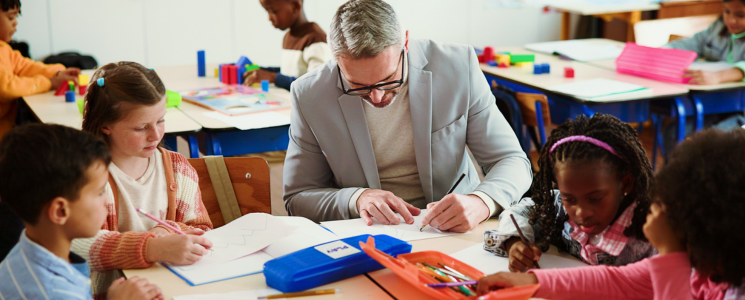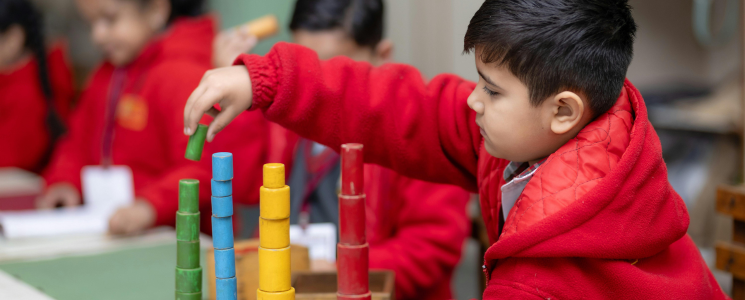Teaching Year 2 is one of the most rewarding experiences in education. At this stage, students are curious, imaginative, and eager to explore the world around them. However, ensuring your lessons align with the Year 2 Australian Curriculum can feel challenging without clear direction. The Year 2 Curriculum Australia framework provides structured outcomes that guide teachers to deliver meaningful, balanced, and engaging learning experiences.
This guide will help you understand how to plan, structure, and teach effectively according to the Year 2 Australian Curriculum, while also keeping students motivated and confident in their learning journey.
Understanding the Year 2 Australian Curriculum Framework
Before designing lessons, it’s important to understand the foundation of the Year 2 Australian Curriculum. This national framework ensures that every child across Australia receives consistent, high-quality education.
At its core, the Year 2 Curriculum Australia covers eight key learning areas:
- English
- Mathematics
- Science
- Humanities and Social Sciences (HASS)
- The Arts
- Health and Physical Education
- Technologies
- Languages
Each subject includes achievement standards that describe what students should know and be able to do by the end of the year. These standards help teachers measure progress and identify individual learning needs.
Understanding these outcomes ensures your teaching not only follows the curriculum but also builds a strong foundation for future years of learning.
Designing Lesson Plans Aligned with the Year 2 Curriculum Australia
Effective lesson planning starts with the curriculum itself. The Year 2 Australian Curriculum emphasizes progression from Year 1, encouraging deeper thinking, problem-solving, and collaboration.
1. Start with Clear Learning Intentions
Each lesson should begin with a defined learning goal. For example, in English, you might set the goal as: “Students will identify key details in a short story and describe the main idea.”
When you plan lessons around these goals, students understand what they are working toward. Clear intentions align with the achievement standards of the Year 2 Curriculum Australia, helping you track whether outcomes are being met.
2. Integrate Cross-Curriculum Priorities
The Year 2 Australian Curriculum also highlights three cross-curriculum priorities:
- Aboriginal and Torres Strait Islander Histories and Cultures
- Asia and Australia’s Engagement with Asia
- Sustainability
Including these priorities brings real-world relevance to your lessons. For instance, you could explore traditional Aboriginal art in The Arts or discuss environmental responsibility in Science. This approach creates more connected and meaningful learning experiences.
Building Engagement through Interactive Teaching Strategies
Keeping Year 2 students engaged is key to successful teaching. Children at this age learn best through play, creativity, and hands-on exploration. The Year 2 Curriculum Australia encourages teaching approaches that combine structure with flexibility.
1. Use Storytelling to Build Understanding
Storytelling is a powerful tool for this age group. Whether teaching Science, English, or HASS, stories help students visualize concepts and remember lessons better. When introducing a topic in the Year 2 Australian Curriculum, start with a simple story that relates to their lives.
For example, when discussing weather patterns in Science, tell a short story about “Sunny the Cloud” who travels across Australia bringing different weather conditions. It’s fun, memorable, and perfectly aligned with curriculum goals.
2. Include Movement and Creativity
Young learners thrive when they can move, draw, and create. Incorporating drama, dance, or role play from the Arts section of the Year 2 Australian Curriculum helps children express understanding in multiple ways.
During English lessons, students could act out scenes from a book. In Mathematics, they can use physical objects to model addition and subtraction. These approaches make learning active and enjoyable while supporting diverse learning styles.
Using Assessment to Guide Teaching
Assessment is not just about testing knowledge. It’s a tool that helps teachers improve lesson design and adapt teaching to student needs. The Year 2 Australian Curriculum provides achievement standards that serve as benchmarks for each subject.
1. Combine Formative and Summative Assessment
Formative assessments include short, ongoing checks like quizzes, discussions, or journal reflections. These help identify where students need extra support. Summative assessments, such as projects or final reports, measure how well students meet end-of-year standards.
By balancing both types, you can ensure your teaching aligns closely with the Year 2 Curriculum Australia, while keeping feedback consistent and constructive.
2. Encourage Self and Peer Assessment
Students in Year 2 are developing independence and responsibility. Teaching them to assess their own work encourages reflection. Peer assessment, on the other hand, builds collaboration and communication skills.
This reinforces confidence and aligns with the personal and social capabilities outlined in the Year 2 Australian Curriculum.
Integrating Technology in Year 2 Learning
Technology is an important element of modern teaching. The Year 2 Australian Curriculum highlights the role of digital literacy across subjects. Teachers should encourage students to use technology creatively and safely.
1. Use Digital Tools to Support Learning
Online learning platforms, interactive games, and educational videos can transform lessons. For example, apps that let students explore patterns or create digital artworks can make abstract concepts easier to grasp.
When aligned with the Year 2 Curriculum Australia, technology provides opportunities for personalized learning and skill development in areas such as problem solving and digital communication.
2. Teach Safe and Responsible Use of Technology
It’s equally important to teach online safety. The curriculum emphasizes responsible digital citizenship, even at this early stage. Use age appropriate discussions to teach students about privacy, kindness online, and balanced screen time.
This early introduction to responsible technology use sets the foundation for positive digital habits.
Differentiation for Diverse Learning Needs
Every classroom has students with varying abilities, interests, and learning speeds. The Year 2 Australian Curriculum encourages differentiation to ensure all students have equal opportunities to succeed.
1. Adapt Content and Activities
Not all students learn in the same way. Some may excel in written work, while others need visual or hands-on activities. Adapt lessons by offering varied formats like drawing, storytelling, or group discussions.
In Mathematics, for instance, some students can use manipulatives while others solve problems on tablets. The goal is to make sure everyone can access and achieve the intended outcomes of the Year 2 Curriculum Australia.
2. Offer Targeted Support and Enrichment
Identify students who need extra support or advanced challenges. For struggling learners, break tasks into smaller steps and celebrate small successes. For advanced learners, provide extension tasks that deepen understanding, such as creative writing or independent research projects.
Differentiation ensures that every child’s progress aligns with curriculum expectations while maintaining enthusiasm and confidence in learning.
Creating a Positive and Inclusive Classroom Environment
The classroom atmosphere directly impacts how well students learn. The Year 2 Australian Curriculum emphasizes social and emotional development alongside academics. Building a positive environment fosters engagement and cooperation.
1. Encourage Collaboration and Respect
Students in Year 2 are learning how to work in teams and respect different opinions. Group activities, classroom discussions, and shared projects help them practice empathy and communication.
For example, when teaching Science, assign small groups to explore habitats. Each student contributes, learns cooperation, and values teamwork, all vital aspects of the Year 2 Curriculum Australia framework.
2. Celebrate Growth and Effort
Recognize achievements regularly, not just top scores. Positive reinforcement boosts motivation and creates a growth mindset. Display student work, celebrate milestones, and involve parents in recognizing progress.
This supportive approach aligns with the curriculum’s general capabilities, focusing on personal and social development.
Practical Tips for Teachers Implementing the Year 2 Curriculum Australia
- Plan weekly lessons based on learning outcomes from the Year 2 Australian Curriculum.
- Use a mix of visual, auditory, and kinesthetic activities.
- Reflect after each lesson to identify what worked well and what can be improved.
- Encourage curiosity by linking subjects to real-world examples.
- Collaborate with other teachers to share ideas and resources.
Consistency, creativity, and reflection are key to effective teaching at this level.
Bringing the Year 2 Australian Curriculum to Life
Teaching according to the Year 2 Australian Curriculum is about more than meeting standards. It’s about nurturing curiosity, building confidence, and creating memorable learning experiences. The Year 2 Curriculum Australia gives teachers a clear framework, but it’s your creativity and care that bring it to life.
By planning purposefully, integrating engaging activities, using assessment wisely, and fostering inclusivity, you can ensure every student thrives. With thoughtful alignment and genuine enthusiasm, your classroom will not only meet the curriculum but exceed it, helping students develop skills and joy that last well beyond Year 2.







